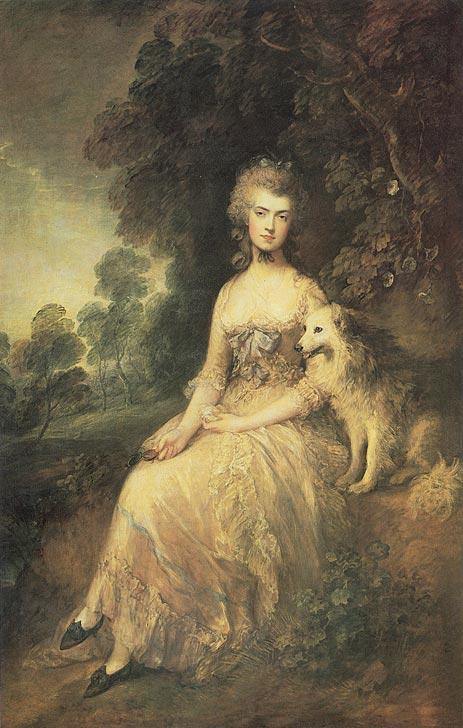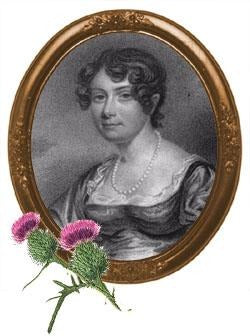A History Of Bath: Ralph Allen and John Woods (Elder and Younger)
Ralph Allen: 1693-1764
 Of the three men generally held to have been responsible for the city of Bath's sensational eighteenth-century development—Ralph Allen, Beau Nash and John Wood the Elder—Allen is arguably the most remarkable. He came to the city in 1710 from Cornwall, as assistant to the postmistress: and, after succeeding her two years later, he became the youngest postmaster in the kingdom, at a salary of £25 per annum. He won the patronage of General Wade in 1715, when he disclosed details of a Jacobite plot in the South West; and with the General's financial support, he was able to institute a system of 'cross posts' that completely revolutionised the inadequate postal system, and made him a personal fortune. In 1726 he bought the stone quarries at Combe Down, and built an ingenious railway to carry the huge blocks down the Bath, where the building renaissance, inspired by the genius of John Wood the Elder, was just beginning.
Of the three men generally held to have been responsible for the city of Bath's sensational eighteenth-century development—Ralph Allen, Beau Nash and John Wood the Elder—Allen is arguably the most remarkable. He came to the city in 1710 from Cornwall, as assistant to the postmistress: and, after succeeding her two years later, he became the youngest postmaster in the kingdom, at a salary of £25 per annum. He won the patronage of General Wade in 1715, when he disclosed details of a Jacobite plot in the South West; and with the General's financial support, he was able to institute a system of 'cross posts' that completely revolutionised the inadequate postal system, and made him a personal fortune. In 1726 he bought the stone quarries at Combe Down, and built an ingenious railway to carry the huge blocks down the Bath, where the building renaissance, inspired by the genius of John Wood the Elder, was just beginning.
This very astute enterprise earned him another fortune: and in 1735 he commissioned Wood to build Prior Park, a superb Palladian mansion overlooking the Widcombe valley and city. The quarrelsome eccentric, Philip Thicknesse, described the house, perhaps with some justification, as 'a noble seat which sees all Bath, and which was built, probably for all Bath to see'. Allen was now a very wealthy man, and at Prior Park he entertained many of the famous poets, politicians, artists and men of letters of his time, including Pope, Gainsborough, David Garrick, Henry Fielding and the elder Pitt.
Fielding, it is said, took him as the model for Squire Allworthy in Tom Jones; and Pope paid him a modest compliment in the epilogue to his Satires with this couplet: Let humble Allen, with an awkward shame, Do good by stealth, and blush to find fame. Whether by stealth or not, Allen was a warm-hearted philanthropist contributing generously to many worthy causes. He donated £1,000 towards the building of the Bath Hospital, as well as the stone from his quarries; and Fielding described him as 'a munificent patron, a warm and firm friend... hospitable to his neighbours, charitable to the poor, and benevolent to all mankind'.
What remains of his town house in Bath can still be seen, in Lilliput Alley, close to the Abbey. From the end of the alley, the narrow but splendid Palladian east front can just be glimpsed: and if the visitor turns round at this point he will see, on the slopes of Claverton Down, the folly that Allen built there. It is called Sham Castle, and is a façade with nothing behind it; its purpose was simply to enhance the romanticism of the view from his windows. Ralph Allen was an outstanding businessman and a legendary patron and benefactor. He was Mayor of the city only once—in 1742—but his influence on its development was profound. He died in 1764, aged seventy-one.
Why not explore the history of Bath yourself, including a visit to the newly reopened Jane Austen Centre.
John Wood the Elder: 1704-1754
 The elder Wood has been described as 'the pioneer who brought Bath from being an insignificant little town into the mainstream of European architecture'. He was born in the city, but much of his early career was spent in Yorkshire and London; he returned to Bath in 1727, and there his architectural genius found its fullest expression.
The elder Wood has been described as 'the pioneer who brought Bath from being an insignificant little town into the mainstream of European architecture'. He was born in the city, but much of his early career was spent in Yorkshire and London; he returned to Bath in 1727, and there his architectural genius found its fullest expression.
He was a confirmed disciple of the Palladian school, a style named after the sixteenth-century Italian architect, Andrea Palladio, and his ambitious plan was to make Bath the Rome of Britain, with a Forum, a Circus Maximus and other comparable buildings. The Corporation received his scheme with a marked lack of enthusiasm; but he was an entrepreneur and a business man as well as an architect, and the need to satisfy the growing demand for accommodation in the city soon began to occupy most of his time. Work on Queen Square, named in honour. of George II's consort, Caroline, was commenced in 1729, and continued for seven years.
The northern terrace of the square is particularly fine: Bryan Little has described it as 'Bath's most important piece of architecture... a set of lodgings becomes a palace'. Wood took one of the centre houses—24—for himself. Later, he built Prior Park, Ralph Allen's splendid mansion on the outskirts of the city. But his greatest achievement was the Circus, which was commenced in 1754. Wood died only three months after laying the foundation stone of the first house; but the work was completed by his son, John Wood, also an outstanding architect, in 1769. Wood died at his house in Queen Square in 1754, and a bronze tablet commemorates his occupancy. He was buried in the chancel of Swainswick Church.
John Wood the Younger: 1728-1782
 The achievement of the younger John Wood is considered by some authorities to surpass even that of his father. After completing the Circus following the elder Wood's death, he built the incomparable Royal Crescent between 1767 and 1775, linking it to the Circus with Brock Street, which he named after his brother-in-law: and almost simultaneously, his designs for the new Assembly Rooms saw fruition. Alfred Street and Bennett Street were also his creations.
The achievement of the younger John Wood is considered by some authorities to surpass even that of his father. After completing the Circus following the elder Wood's death, he built the incomparable Royal Crescent between 1767 and 1775, linking it to the Circus with Brock Street, which he named after his brother-in-law: and almost simultaneously, his designs for the new Assembly Rooms saw fruition. Alfred Street and Bennett Street were also his creations.
He was trained assiduously by his father, and when the elder Wood went to Liverpool to build a new town hall, his son accompanied him. It was there he met his future wife, who was the sister of Chester's town clerk, Thomas Brock. The couple were married in 1752, and settled in Bath at 41 Gay Street, an attractive house that had been designed by the elder Wood, with an elaborate corner bow facing Queen Square. Here they brought up a family of seven girls and two boys. Towards the end of his life he was deeply concerned over the poor housing conditions of labourers and artisans. The overcrowding, and the damp, unhealthy nature of most of the ramshackle, unsanitary cottages in which they lived, appalled him: and in 1780 he published A Series of Plans for Cottages and Habitations of the Labourer, either in Husbandry or the Mechanic's Arts, in which he undoubtedly staked a claim to be the first social reformer in architecture. He died in 1801, and was buried beside his father in the chancel of Swainswick Church.
Biographical information provided by They Came to Bath. More information on the History of Bath and its architecture can be found at the Building of Bath Museum website. The Museum is open Daily under the guardianship of the Bath Preservation Trust.
Remember, you can explore a wonderful range of Jane Austen literature at The Jane Austen Online Gift Shop.



Leave a comment
This site is protected by hCaptcha and the hCaptcha Privacy Policy and Terms of Service apply.